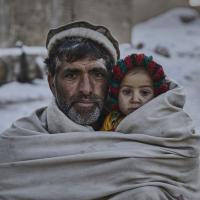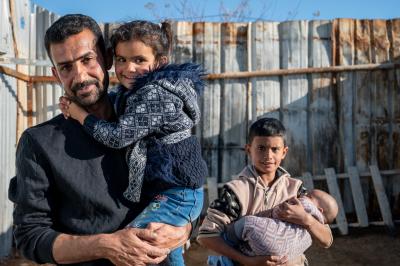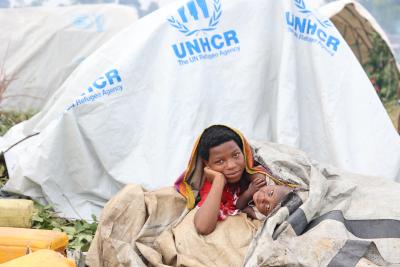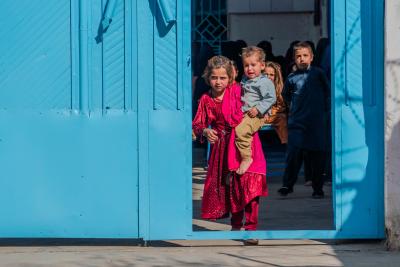In 2023, UNHCR faced significant funding challenges, stemming primarily from a decline in the quantity, quality and timeliness of voluntary contributions from several donors.
These declines were serious obstacles to UNHCR’s ability to respond to the escalating global crisis of forced displacement, whereas timely, sufficient and quality funding allows UNHCR to swiftly address emerging needs and assist displaced populations. The decrease in voluntary contributions – particularly in flexible funding – meant UNHCR faced heightened difficulties in meeting the many and pressing needs of forcibly displaced persons worldwide, left gaps in its assistance, and meant it had to take drastic measures to realign and reorganize its staffing and operational footprint.
Quantity
UNHCR raised $4.880 billion in contributions in 2023, including funds for activities beyond 2023 and the $44.6 million assessed contribution of the UN Regular Budget.
Available resources totalled $5.716 billion when carry-over, multiyear contributions from past years, and other funds available and adjustments are considered. This was a decrease from the $6.180 billion available in 2022. The funds available to UNHCR covered 52% of global budget requirements, compared to 58% in 2022.
Voluntary contributions amounted to $4.835 billion, almost a billion dollars less than the $5.809 billion received in 2022. UNHCR is grateful for the voluntary contributions it received from its donors – both traditional and newer donors – many of whom were also managing increased fiscal pressures. In some cases, these resulted in reduced levels of Overseas Development Assistance (ODA) for multilateral organizations such as UNHCR. Currency devaluations were another determining factor.
UNHCR is grateful for the significant increases in voluntary contributions in 2023 compared with 2022 from among others, the Kingdom of Saudi Arabia (+365%), the State of Kuwait (+210%), UN Joint Programmes (+188%), Education Cannot Wait (+46%), Finland (+39%), the Central Emergency Response Fund (+37%), France (+32%), Austria (+32%), Ireland (+21%), and Norway (+10%).
The more significant reductions in 2023 compared with 2022 included Qatar (-97%), the private sector (-66%), Italy (-50%), the United Kingdom of Great Britain and Northern Ireland (-43%), Canada (-22%), Germany (-19%), the United States of America (-13%), and Japan (-10%). These reductions notwithstanding, the United States of America and Germany remained UNHCR’s top two donors.

Forced displacement has expanded hugely since 2010 and funding for UNHCR has not kept up. Since 2013, when funding averaged $72 for every forcibly displaced or stateless person, the numbers of people in need have grown at a faster rate than the increase in funding. In 2023, per capita funding for UNHCR reached a new low of $47, 19% below the 10-year average.
Quality
The quality of funds relates to how much income is flexible (unearmarked and softly earmarked) and multi-year in accordance with the Grand Bargain’s definitions1. With the size, scale, and costs of humanitarian crises growing, quality humanitarian funding for refugee responses is invaluable.
1. Multi-year and flexible funding - Definitions Guidance Summary
Flexible funding includes funding that is unearmarked and can be spent without restrictions, or softly earmarked, for example to a theme, a situation, or a region.
Flexible funding is allocated to where it is most needed. Once more earmarked funding is received for an operation, the flexible funding that it is using is “released” to resource operations which continue to have major needs but have received less attention. For example, by the end of the first quarter of 2023, the following ten operations were the main recipients of flexible funding allocations: Ukraine, Lebanon, Jordan, Republic of Türkiye, Moldova, Iraq, Syrian Arab Republic, Afghanistan, Ethiopia and Uganda. By year-end, the top 10 operations to which flexible funds were allocated were Uganda, Chad, Iraq, Jordan, Ethiopia, Yemen, Kenya, Sudan, Niger and Nigeria.
Flexible funding includes unearmarked funding. Governments gave $440 million in unearmarked funding, or 61% of the total, while the other $278 million (39%) came from the private sector, including $172 million from UNHCR’s National Partners.
There was a reduction in unearmarked funds in absolute terms: $764 million in 2022 and $718 million in 2023 (a 6% decrease). This meant that in addition to operations receiving less funding specifically directed to their countries, they had to rely on a smaller pool of unearmarked funds, while often having to respond to increased needs.
At year-end, the top 10 operations to which unearmarked funds were allocated were Iraq, South Sudan, Yemen, Chad, Kenya, Nigeria, Ethiopia, Jordan, Central African Republic, and Mauritania. Of these ten, South Sudan, Yemen, Chad, Ethiopia, Jordan, and the Central African Republic had been flagged as underfunded in the two underfunded reports. Against this specific advocacy, these six operations continued to need unearmarked funding in order to deliver on the most urgent priorities for the year.
At the 2023 Global Refugee Forum (GRF), the Governments of Denmark, Finland, Iceland, the Kingdom of the Netherlands, Norway, Sweden and Switzerland led the formulation of a multi-stakeholder pledge on Quality Humanitarian Funding for Refugee Situations, which now has 10 participating Member States. In line with Grand Bargain commitments, this pledge commends the generous ongoing contributions from current donors of quality funds and encourages their continued, long-term commitment to providing UNHCR with at least 30% of their annual humanitarian support in unearmarked funds, or 50% flexible funds. Where existing agreements do not meet this target, current and new donors are encouraged to mobilize additional resources to close the gap by the next GRF in 2027. UNHCR is engaged to support donors in fulfilling these commitments as well as expanding the list of pledges.
Timeliness
The magnitude of displacement in 2023 pushed the boundaries of UNHCR’s capacity to respond. However, timely support from donors allowed the organization to continue strengthening preparedness and response capacity in the face of growing needs, and flexible funding was essential in helping us respond where needs were greatest. In addition to critical support from government donors contributing unearmarked funding, UNHCR was able to quickly launch emergency responses thanks to over $78 million in global emergency reserve funding from the United States, Sweden and Denmark. Private sector donors also contributed more than $22 million in funding softly earmarked for use in situations and emergencies worldwide, as well as valuable unearmarked funding.
By the end of the first quarter of 2023, UNHCR had received 35% of the funds it would receive for the whole year, compared with 32% in 2022. On the one hand, this showed that some donors were delivering on pledges made at the UNHCR Pledging Conference for 2023 in a timely manner. On the other hand, the percentage data for 2022 was also very much affected by the fact that the total income received by year-end was substantively higher because of the generous response to the Ukraine emergency throughout the year.
Predictability

Multi-year funding – funding pledged for 24 months or more – facilitates UNHCR’s efforts to allocate resources to its operations around the world at the beginning of the year. In short, this type of contribution is extremely valuable in giving predictability.
Multi-year funding for use in 2023 amounted to $746 million, higher than the $618.3 million available for use in 2022. The top five providers of multi-year funding in 2023 were Sweden, Germany, Denmark, the European Union, and the Kingdom of the Netherlands. Altogether, their contributions for 2023 constituted 55% of the multi-year funding received by UNHCR for use that year.
The unearmarked portion of multi-year funding received for use in 2023 was higher compared to what was received for use in 2022 ($266.3 million in 2023 compared to $194.7 million for 2022). Nonetheless, with 42% of multi-year funding for use in 2023 still earmarked at country level or below, this meant that the level of predictability was not shared equally across operations.
Diversity
The income received from the top 10 donors in 2023 constituted 71% of all contributions, compared to 69% in 2022. Since 2019, the profile of the top 10 donors has remained fairly consistent, with several notable exceptions. In 2022, four private sector donors (USA for UNHCR, Sweden for UNHCR, Japan for UNHCR, and España con ACNUR) were among the top 10. Since 2021, the United Kingdom of Great Britain and Northern Ireland is no longer in the top 10. France joined the top 10 in 2021 and 2023. CERF was also a top 10 donor to UNHCR in 2020 and 2023.
The profile of the top 10 donors over the last five years underlines that the private sector remains an important partner for UNHCR, including in complementing the financial support provided by member States. One private sector partner that has remained consistently in the top 10 since 2019 is España con ACNUR.
Other sources of diversification for UNHCR are UN pooled funds, UN agencies, and intergovernmental donors (other than the EU). Income from this stream increased by $22 million, or 15%, from $183 million in 2022 to $210 million in 2023. The growth was largely due to a $26 million increase from CERF, $15 million from UN Joint Programmes, and $10 million from Education Cannot Wait, which increased by 55% owing to a multi-year project for over $12 million to the Uganda operation. These contributions offset decreases of $14 million from country-based pooled funds and $11 million from the Special Trust Fund for Afghanistan.
Income from CERF increased by 37% to $97 million and it became UNHCR’s 10th largest donor in 2023. This was primarily due to the Sudan situation, where CERF was UNHCR’s second-largest donor with timely funding to the Central African Republic, Chad, Egypt, Ethiopia, South Sudan and Sudan during the early days of the emergency. UNHCR remained the third largest beneficiary agency of the CERF with 13.5% of the total $663 million disbursed in 2023. Funding from UN Joint Programmes increased by 188% to $23 million in 2023, primarily through a joint programme in Bangladesh, and lastly, funding from Education Cannot Wait.
In line with the Global Compact on Refugees (GCR) as well as UNHCR’s “Strategy on engaging with development actors”, UNHCR operations built strong partnerships with development actors to pursue the protection and solutions objectives within their multi-year strategies. While the priority was on leveraging development partners’ political, financial and technical capacities to promote national inclusion, UNHCR operations also established operational partnerships with development actors, including by implementing or co-implementing projects funded by them.
Development funding has represented 3-5% of UNHCR’s global income over the past five years. In 2023, UNHCR raised $213 million through development contributions, representing 4.4% of its overall voluntary contributions. Together with ongoing multi-year projects, more than 50 UNHCR operations implemented development-funded activities in 2023, mainly in Asia (36%), the Middle East and North Africa (21%), the East and Horn of Africa and the Great Lakes (21%), and West and Central Africa (7%). Thematically, development contributions in 2023 covered areas such as self-reliance and livelihoods, education, peace and governance, housing and infrastructure, and WASH.
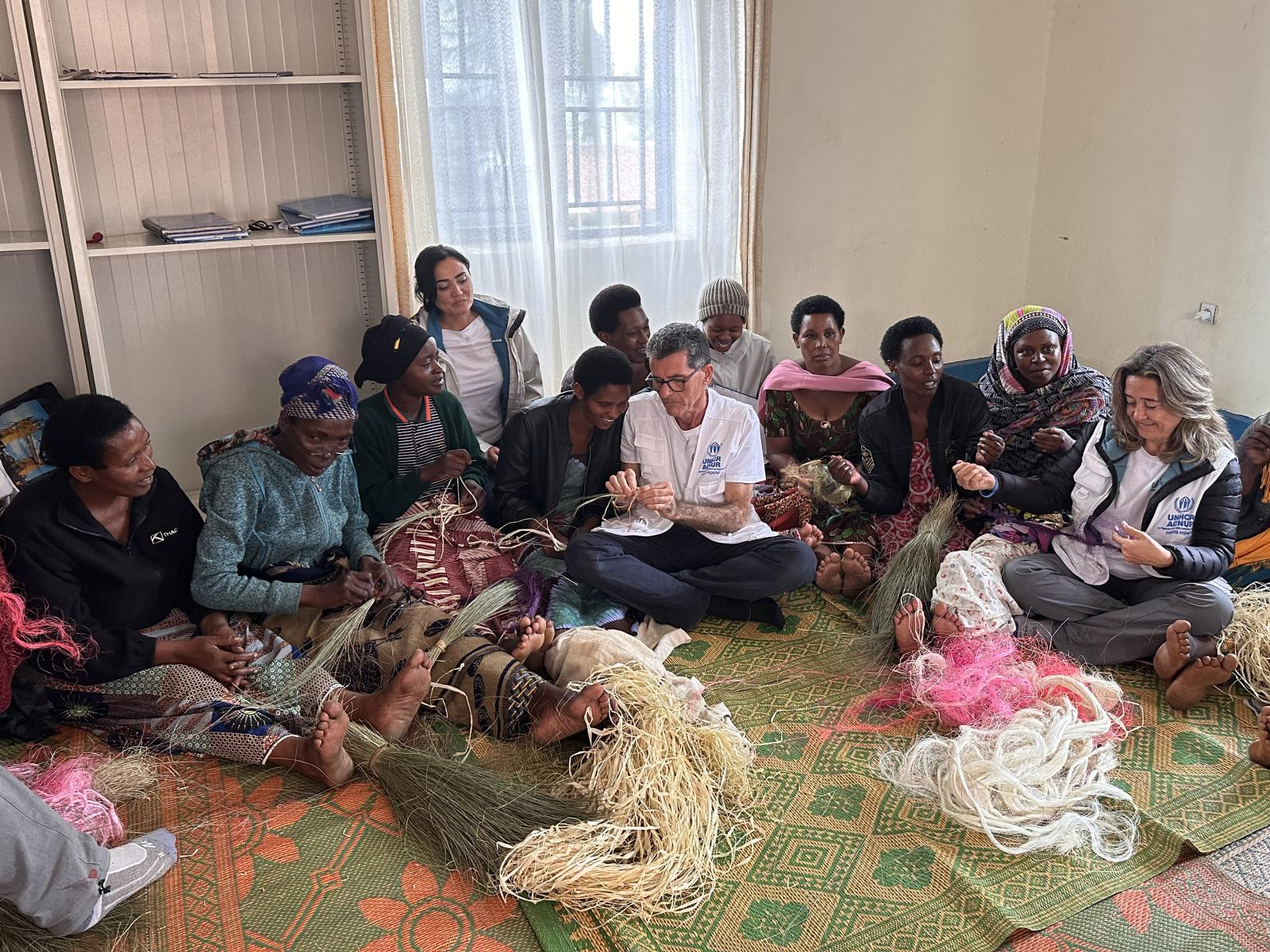

España con ACNUR's enduring commitment as a leading private sector donor since 2019
España con ACNUR has demonstrated the remarkable dedication of the Spanish people and Spanish companies to the refugee cause. It has consistently ranked in the top 10 global donors since 2019. España con ACNUR's strong and dedicated team has effectively mobilized individual donors, rallying 500,000 supporters by 2023.
España con ACNUR's sustained growth owes a great deal to the team’s ability to engage a diverse range of donors in supporting UNHCR’s work, from individuals to corporations and foundations. Their contributions illustrate the solidarity and generosity of Spanish civil society towards forcibly displaced individuals as well as the crucial role of National Partners in engaging with the private sector to leverage income and partnerships for positive change.
Contributions in kind
As well as financial contributions, UNHCR also receives contributions in kind, including goods provided for distribution to populations served by UNHCR and services such as office premises and logistics. Contributions in kind grew rapidly from 2019 to 2022 but declined in 2023, as the total provided by the private sector fell back below $100 million, from $128 million in 2022.
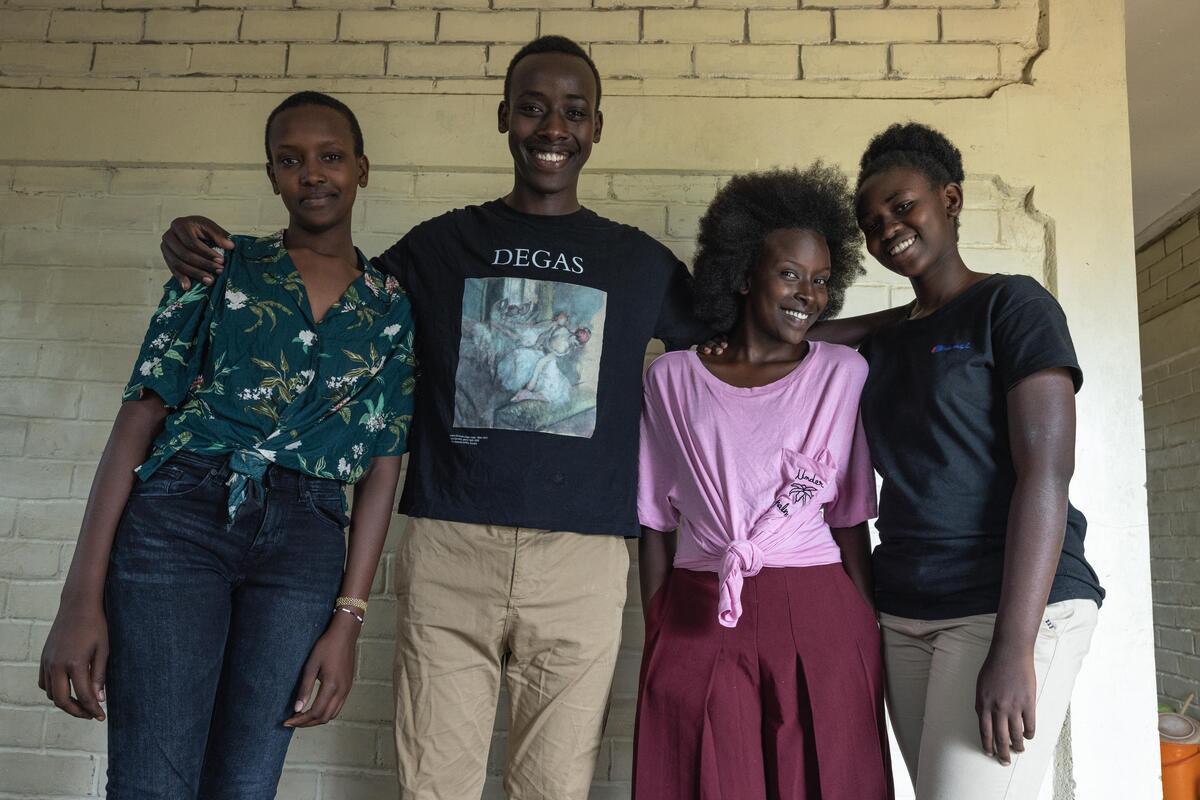

Inditex fashions hope through continued refugee support
Inditex has generously supplied multiple shipments of clothing and footwear, primarily to forcibly displaced people in Uganda, with a total value exceeding $20 million. After High Commissioner Filippo Grandi’s visit to INDITEX's headquarters in Arteixo in August 2023, UNHCR and Inditex set up a joint task force to foster knowledge exchange on the environmental sustainability of in-kind donations.
The visit underscored the ways corporate partnerships can help respond to the challenges faced by refugees, in addition to financial contributions.
Private sector
In 2023, voluntary contributions to UNHCR from individuals and the private sector reached $724 million, constituting 15% of UNHCR’s overall income.
National Partners
UNHCR's National Partners channel the generosity of private sector income from corporations, foundations, philanthropists and 1.7 million individual donors globally.
Donor visibility
UNHCR places significant importance on visibility for flexible, including unearmarked, funding. Donors of this type of funding are acknowledged in funding updates, in multi-media content, web stories, traditional media, social media, digital diplomacy by senior leadership, as well as printed visibility.
Specific visibility plans are made for UNHCR’s main donors of flexible funding, such as Sweden, Norway, and Germany. Such plans recognize the donor’s geographic and thematic priorities, as well as which audiences it needs to reach. They also guide visibility efforts across regions, ensuring that refugee voices are at the centre of storytelling and linking donor contributions to concrete results, especially in emergencies and forgotten crises.
UNHCR also acknowledges its biggest donors of softly or more earmarked funding, such as the U.S., through careful planning and across platforms. In 2023, UNHCR produced multiple videos, stories, social media posts, and other visibility products, highlighting the impact of U.S. funding to UNHCR programmes globally.
To learn more about the impact of donors’ support to UNHCR in 2023, visit the donor pages.
Explore other funding sections


